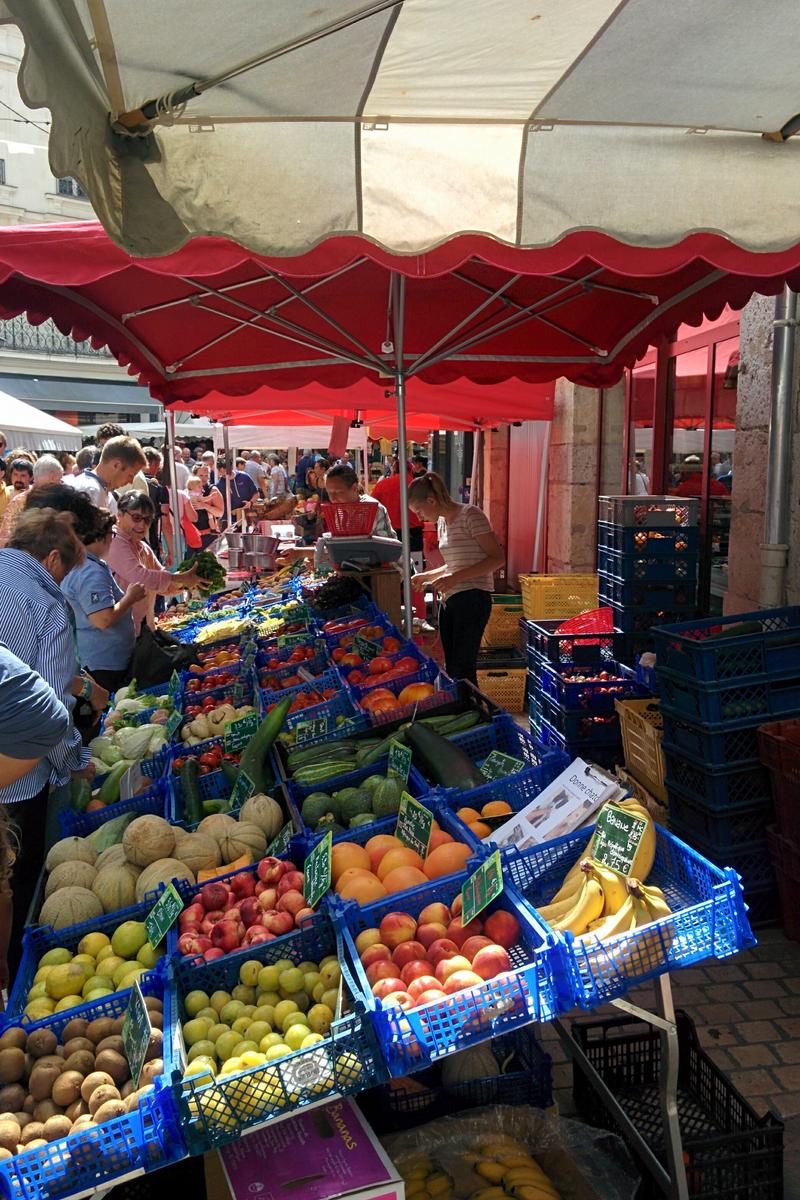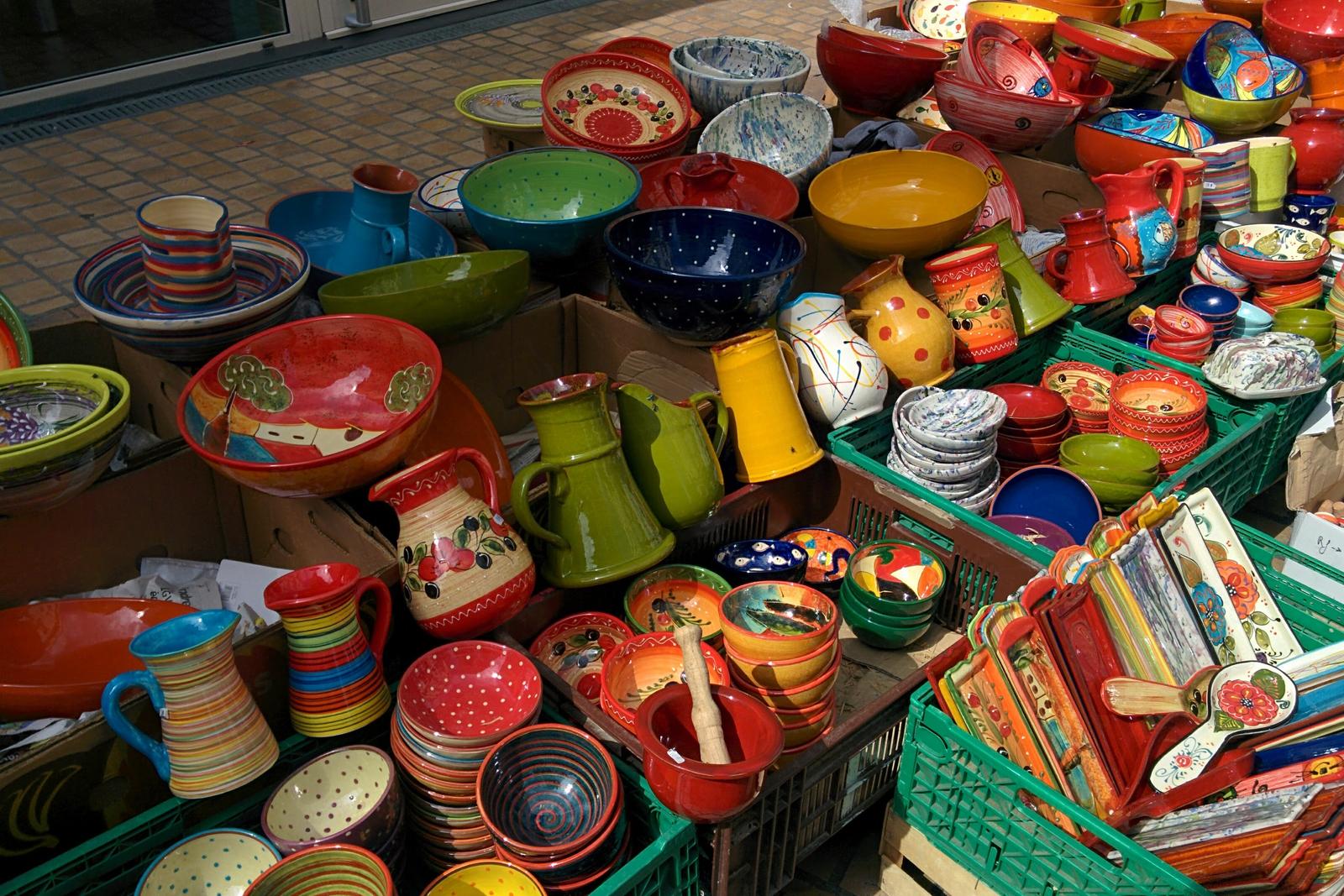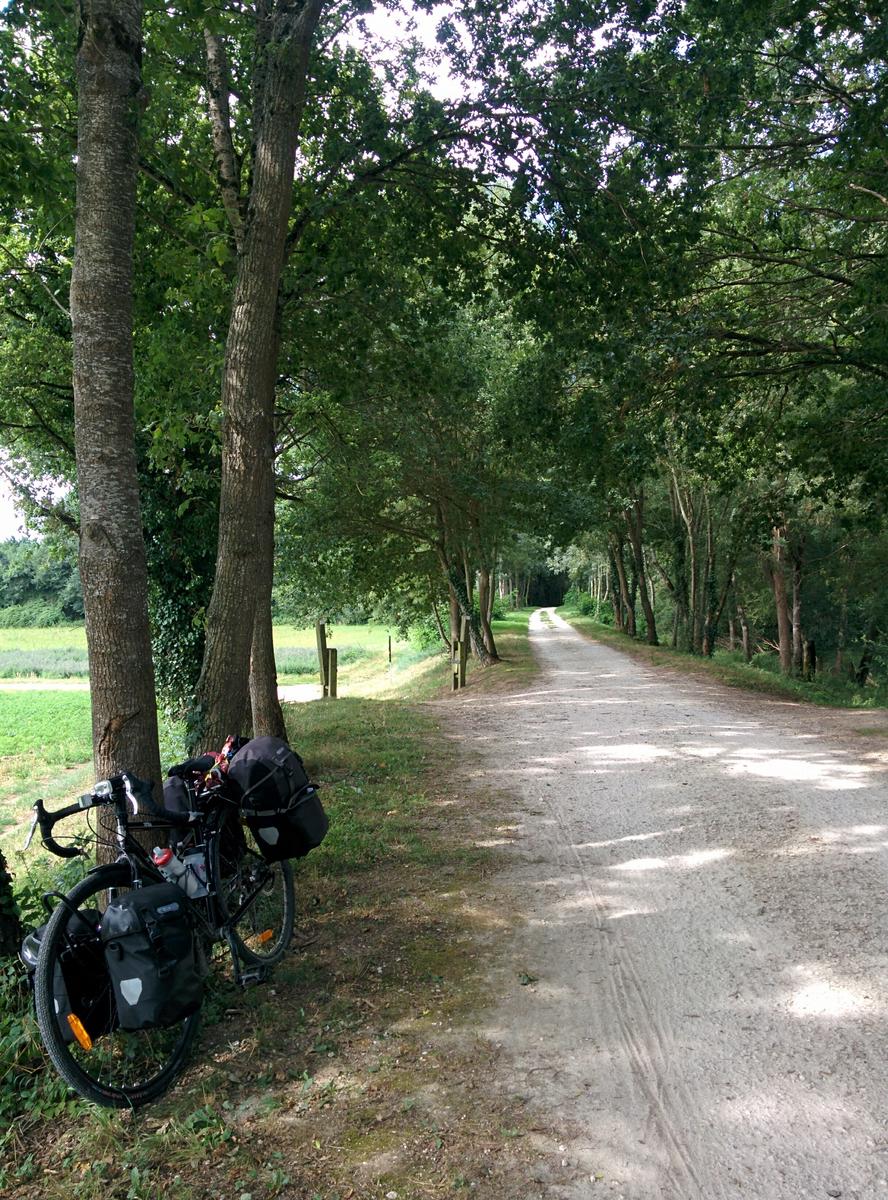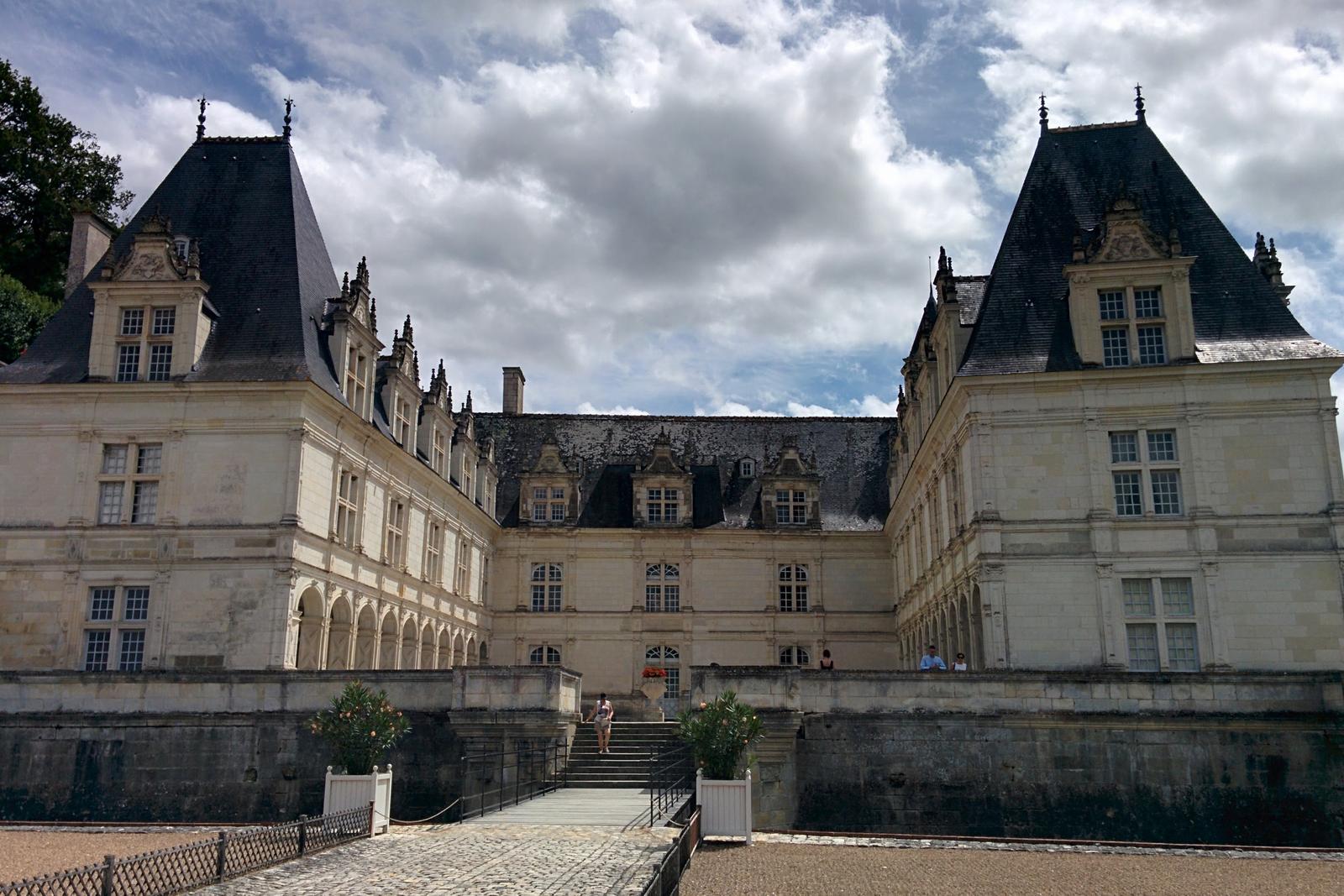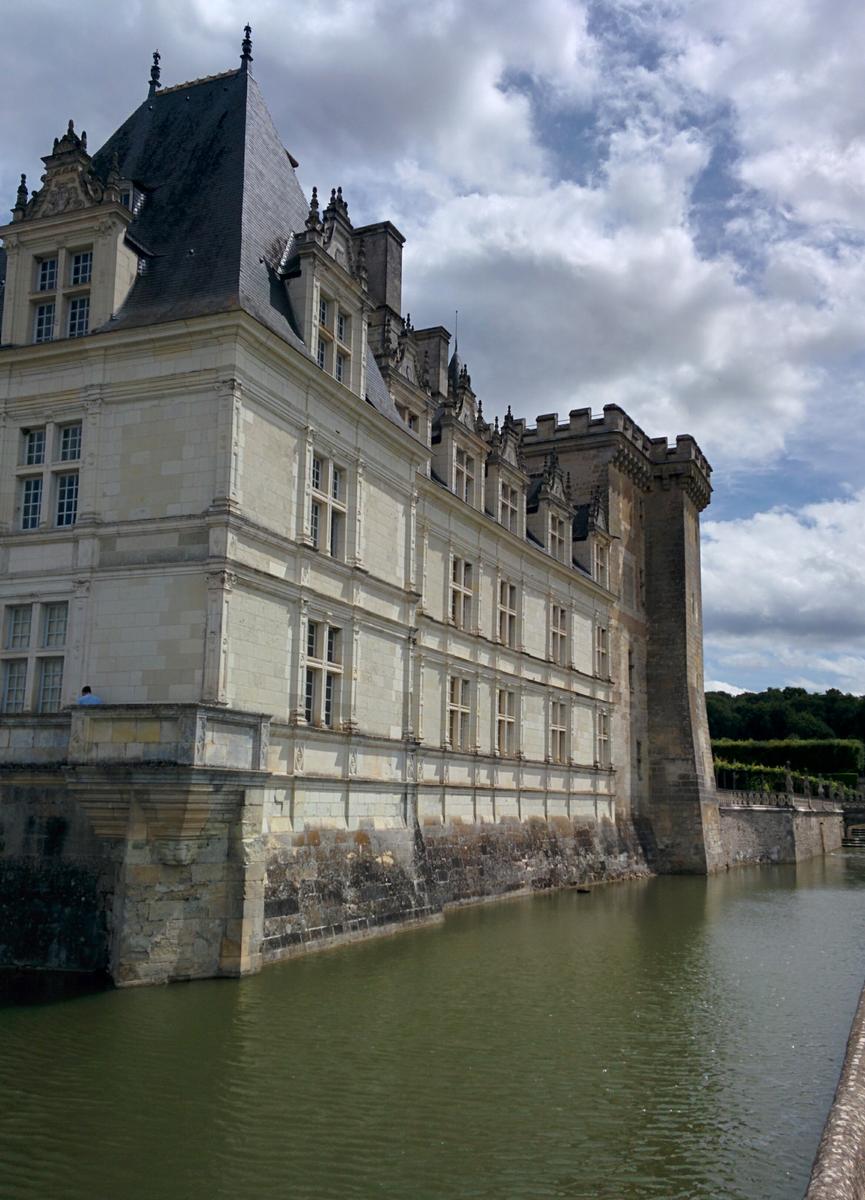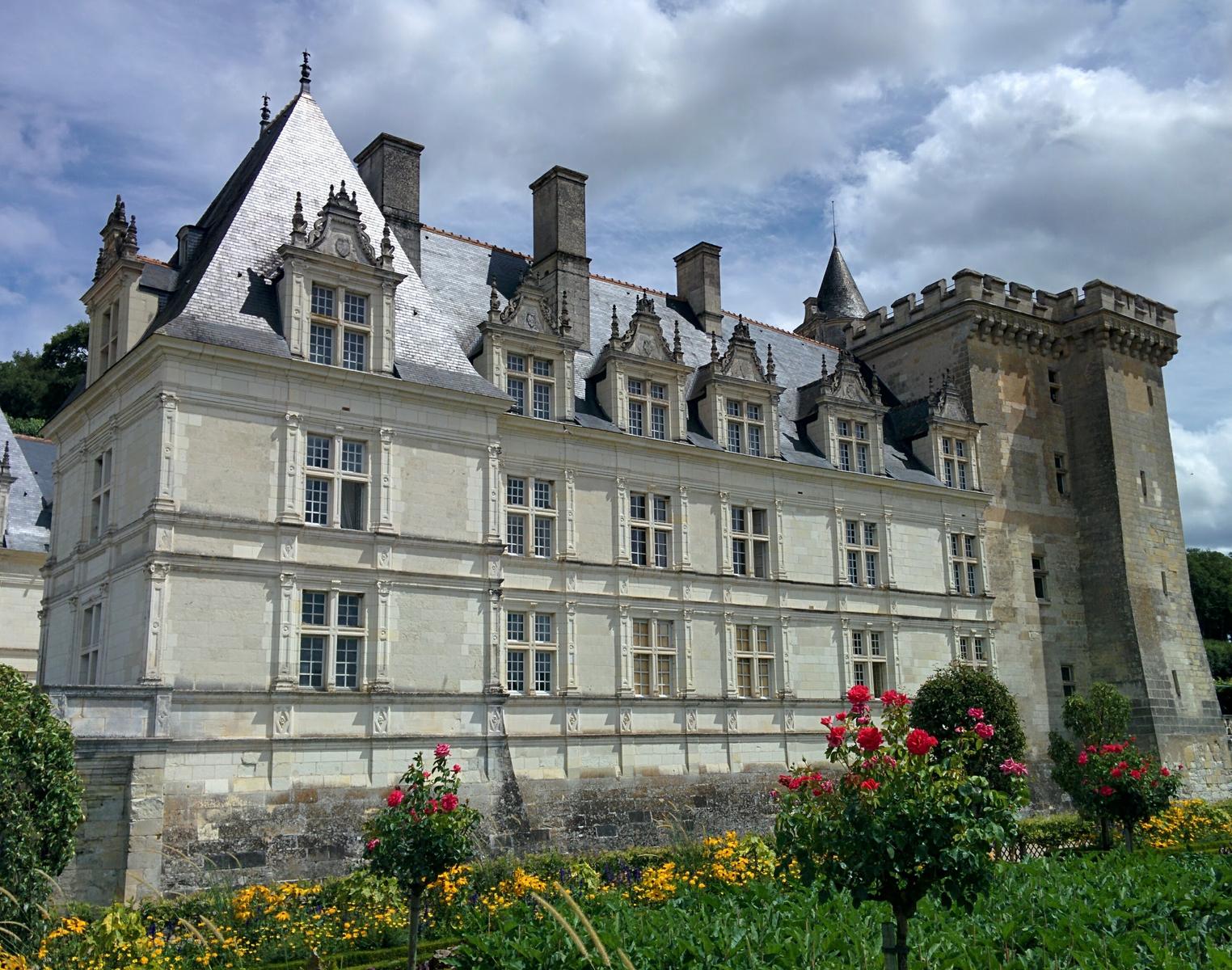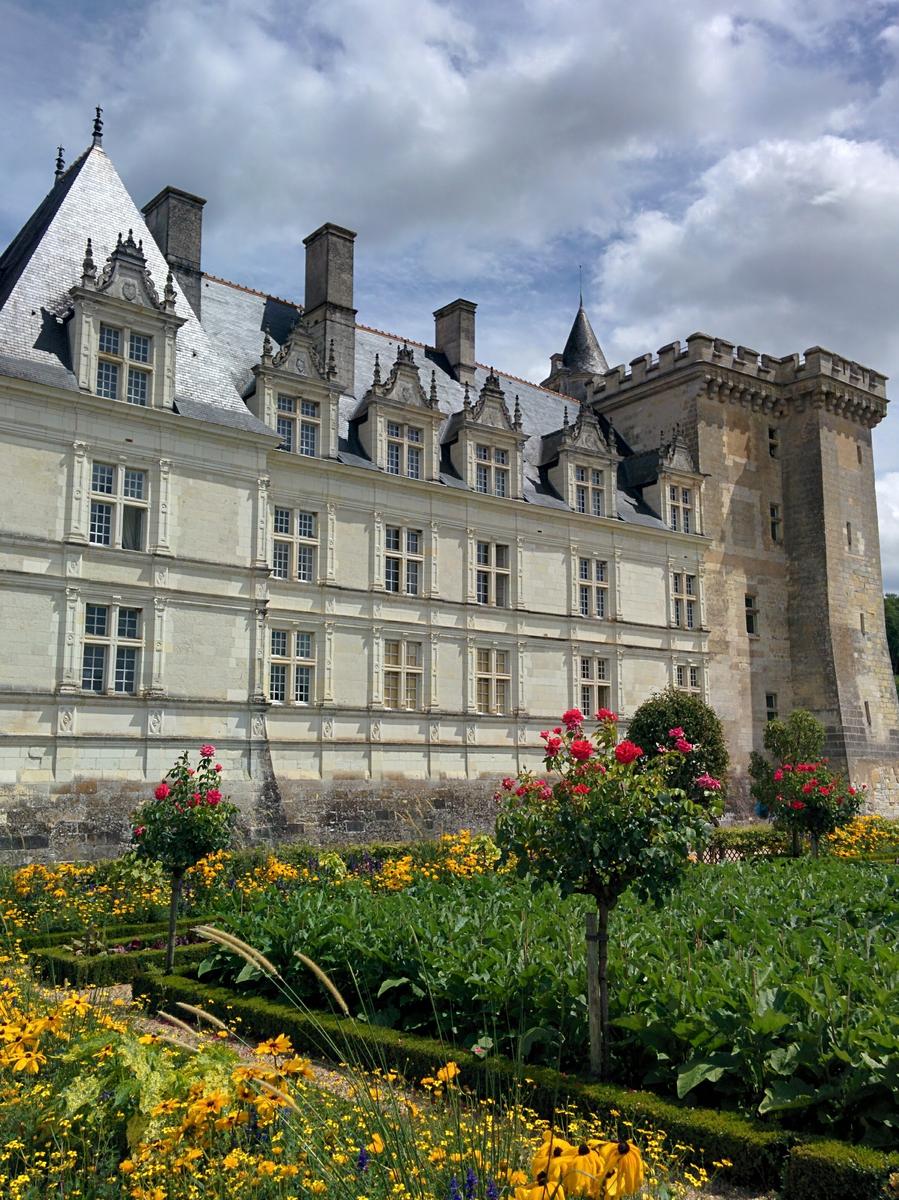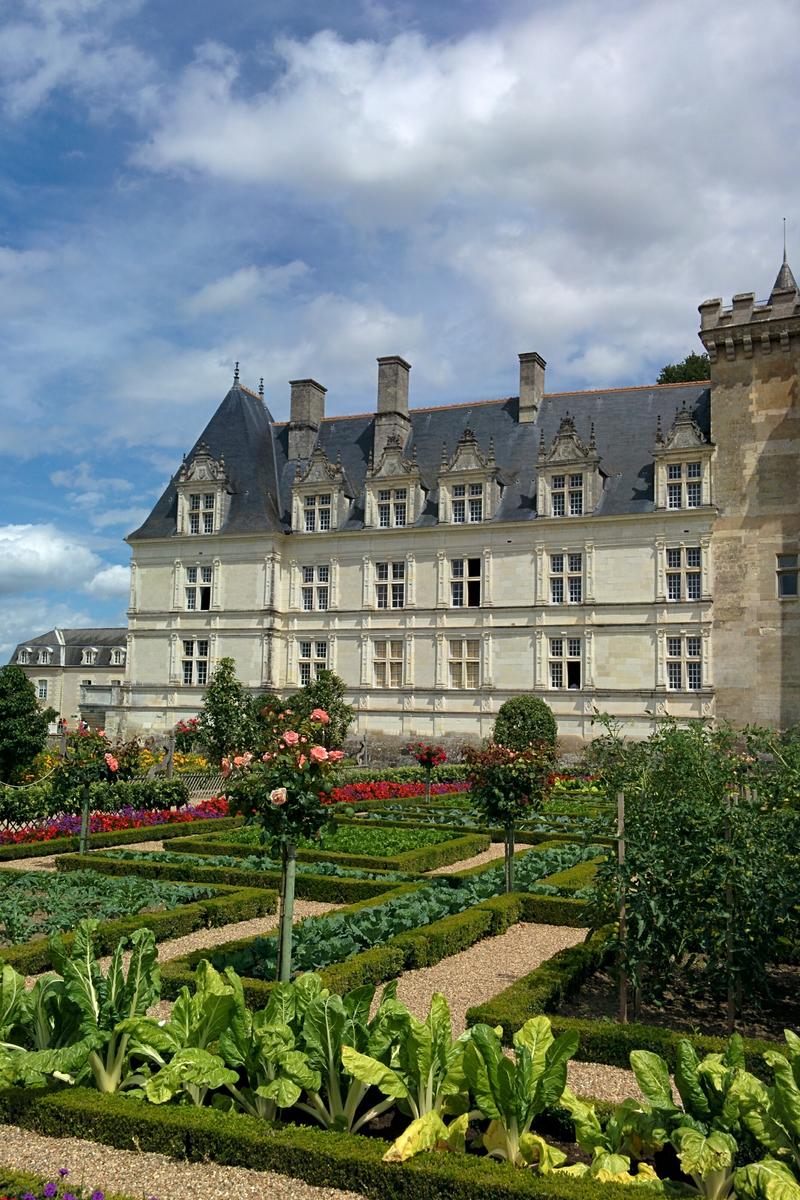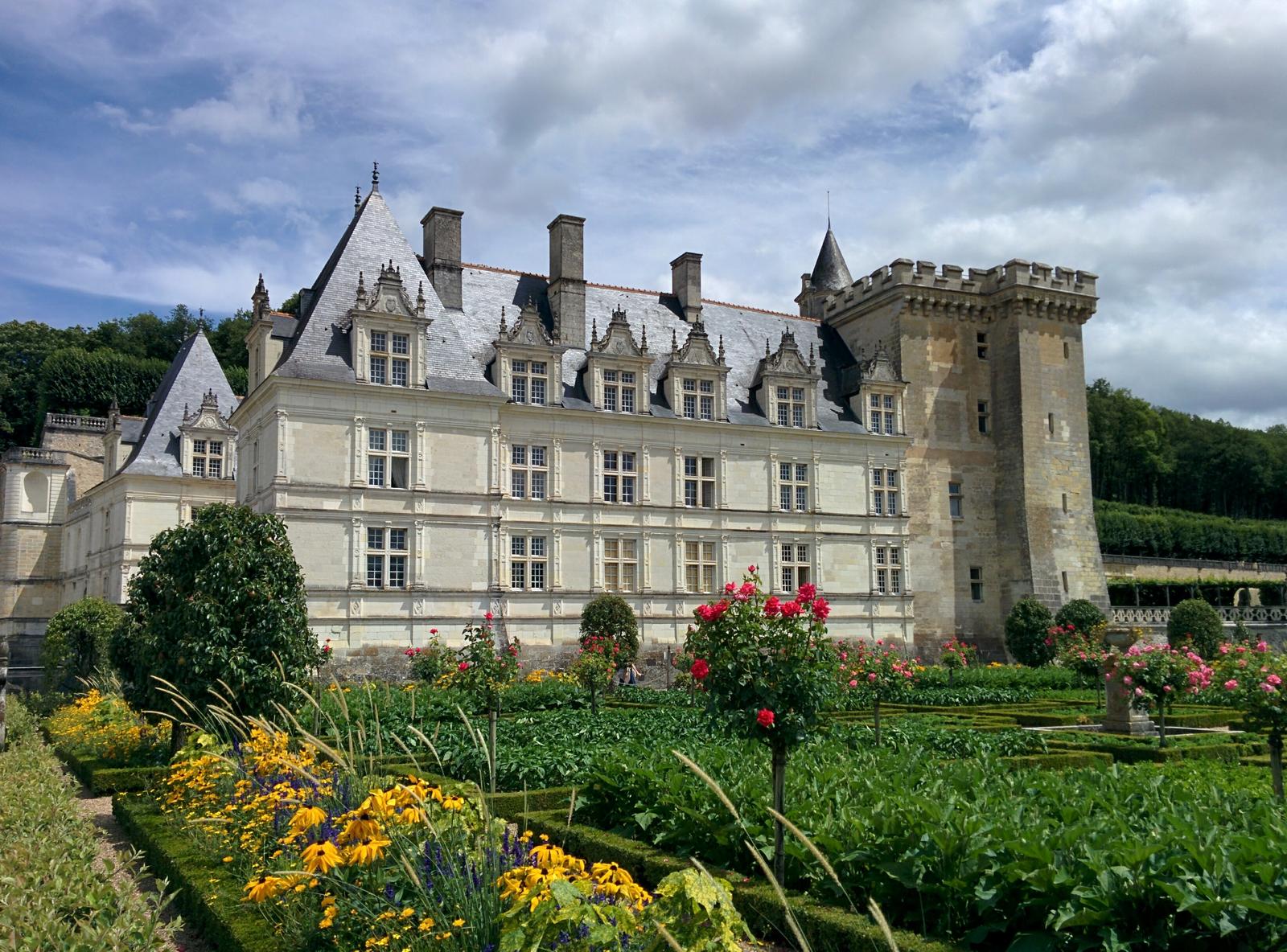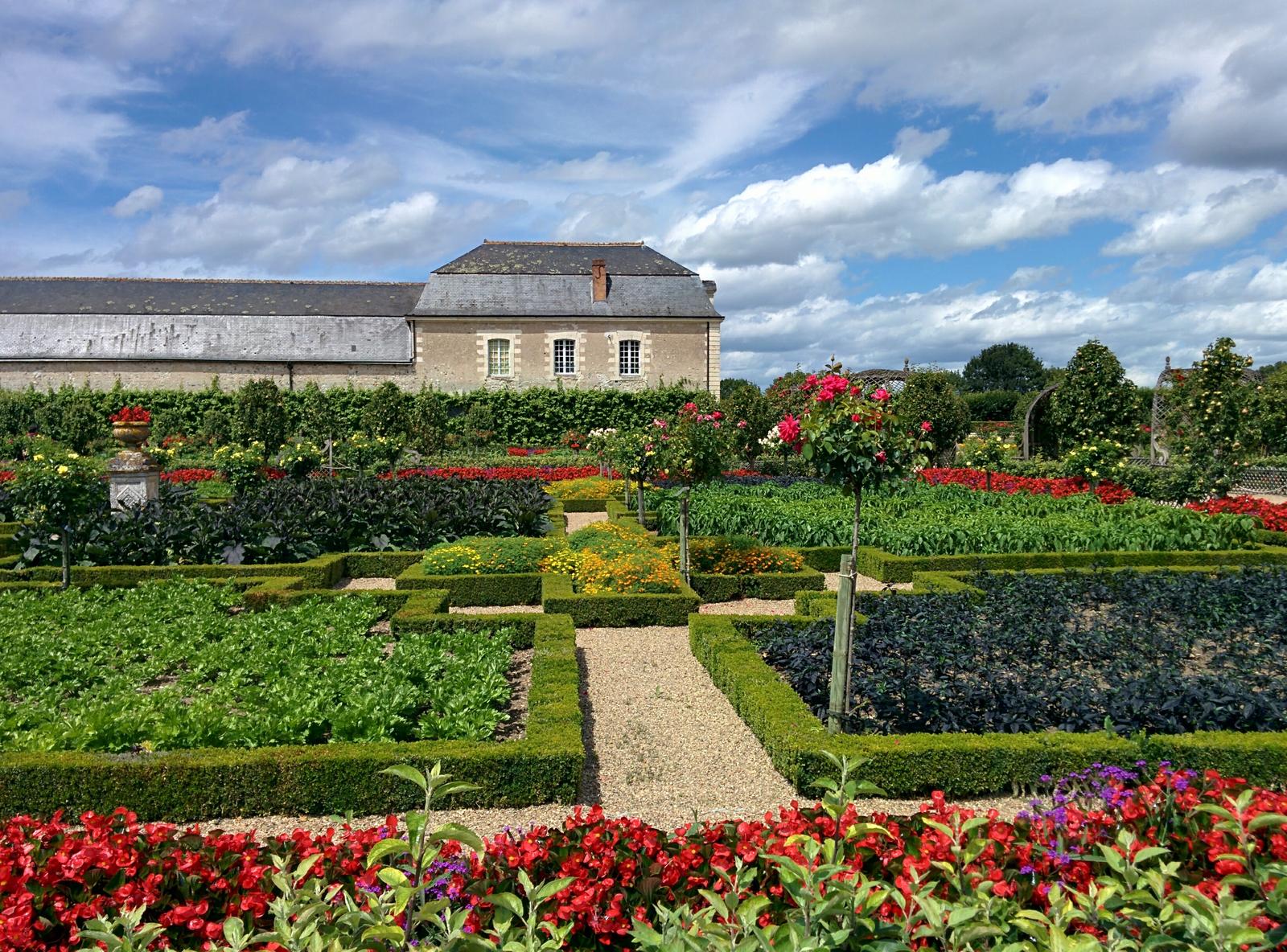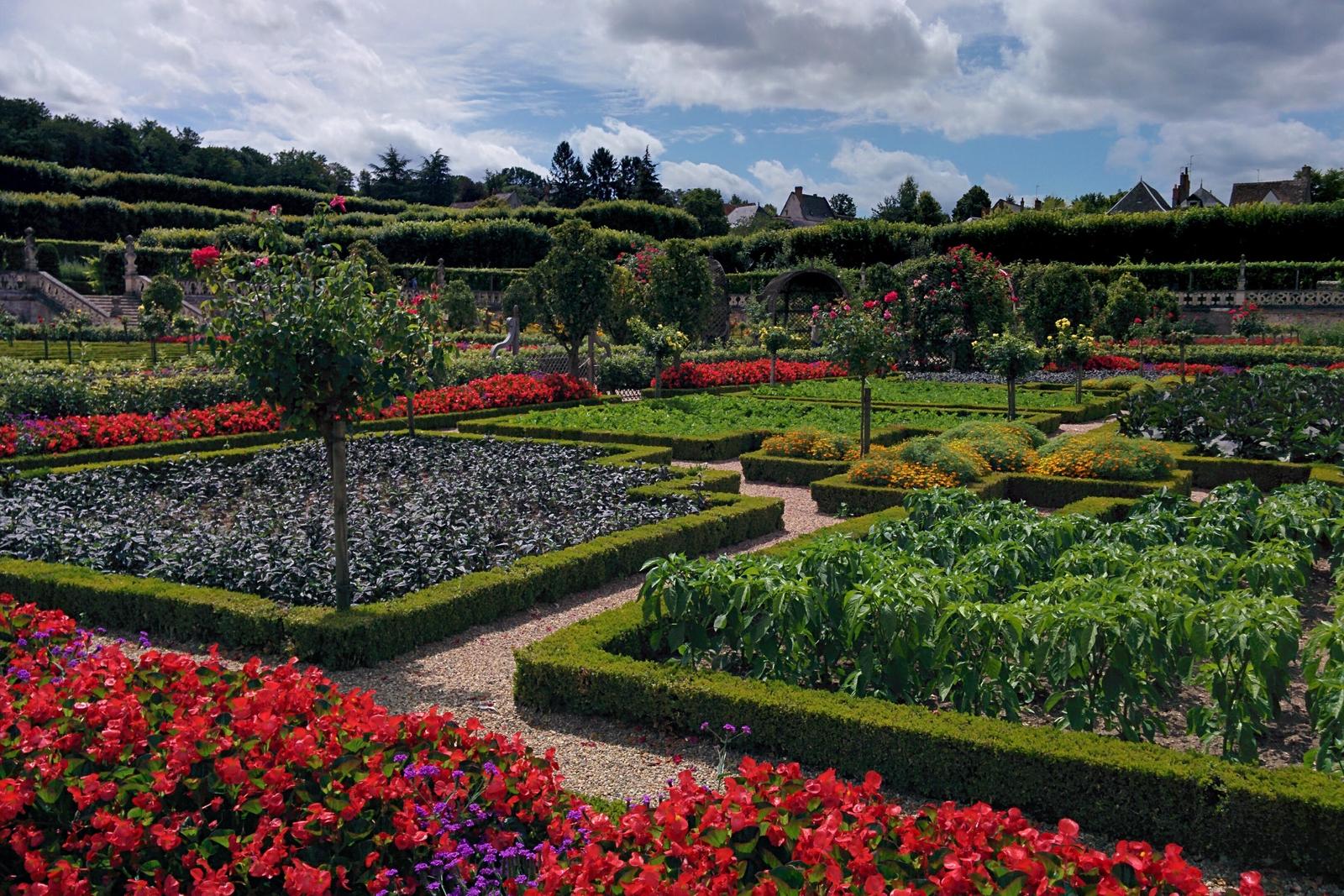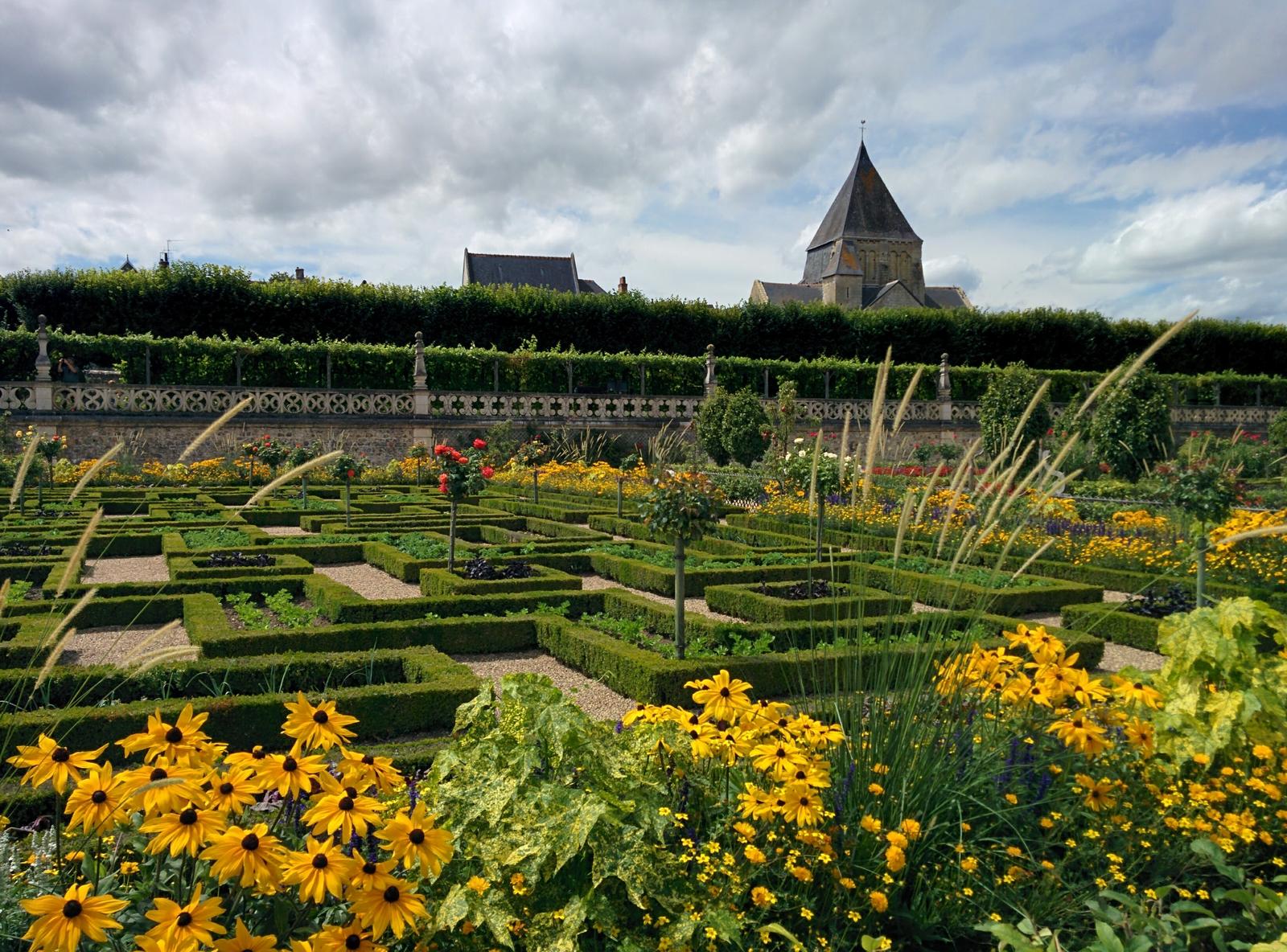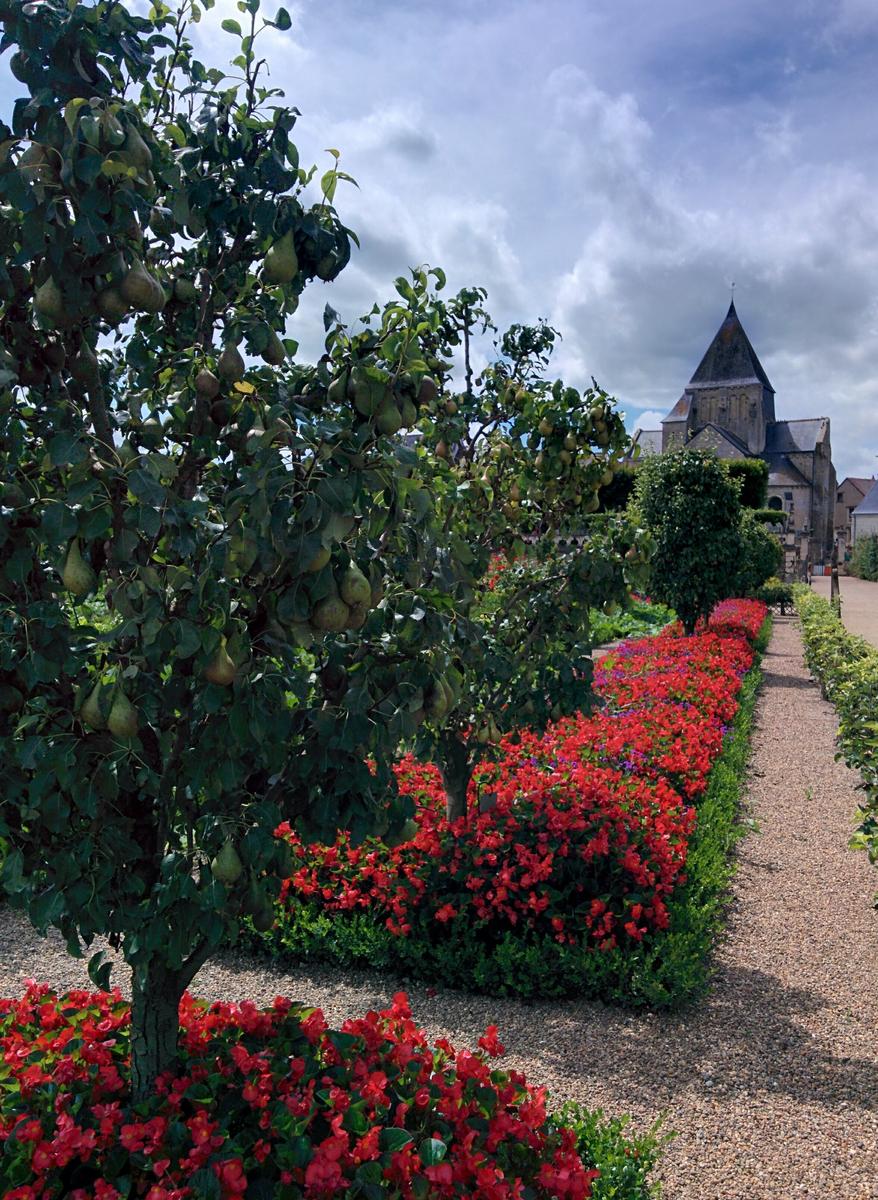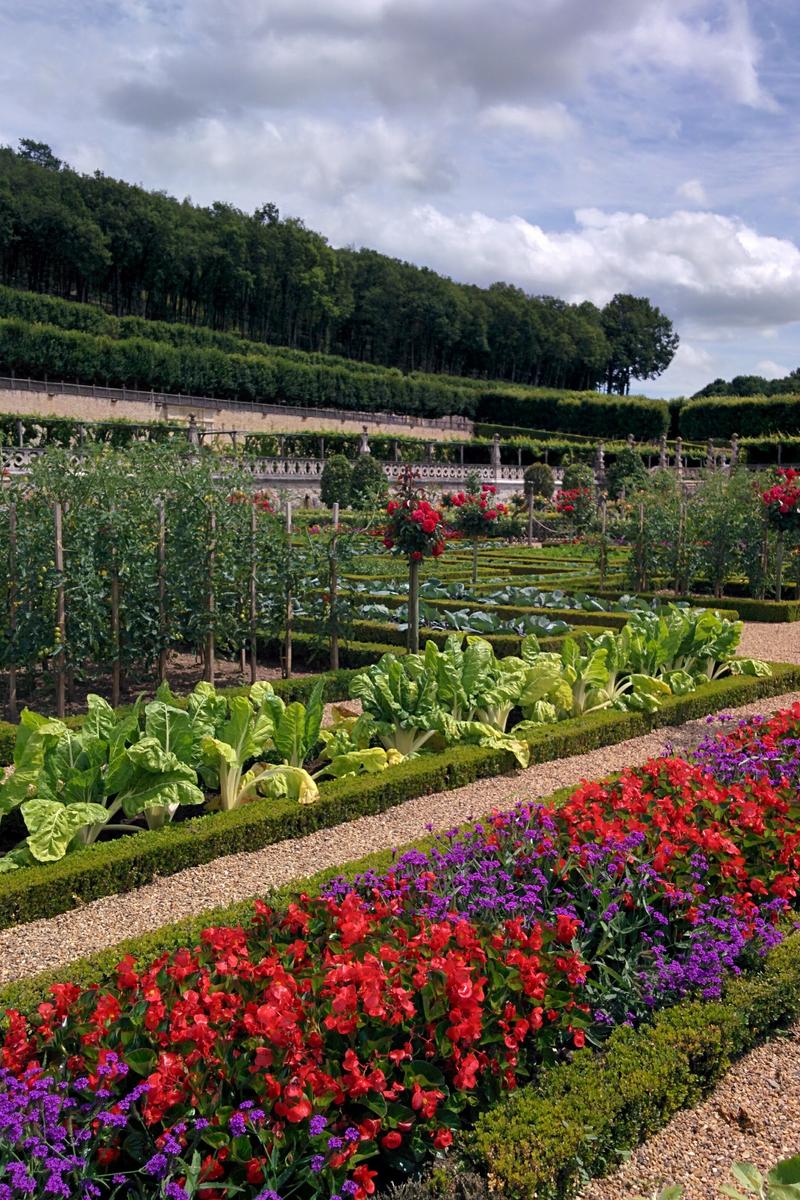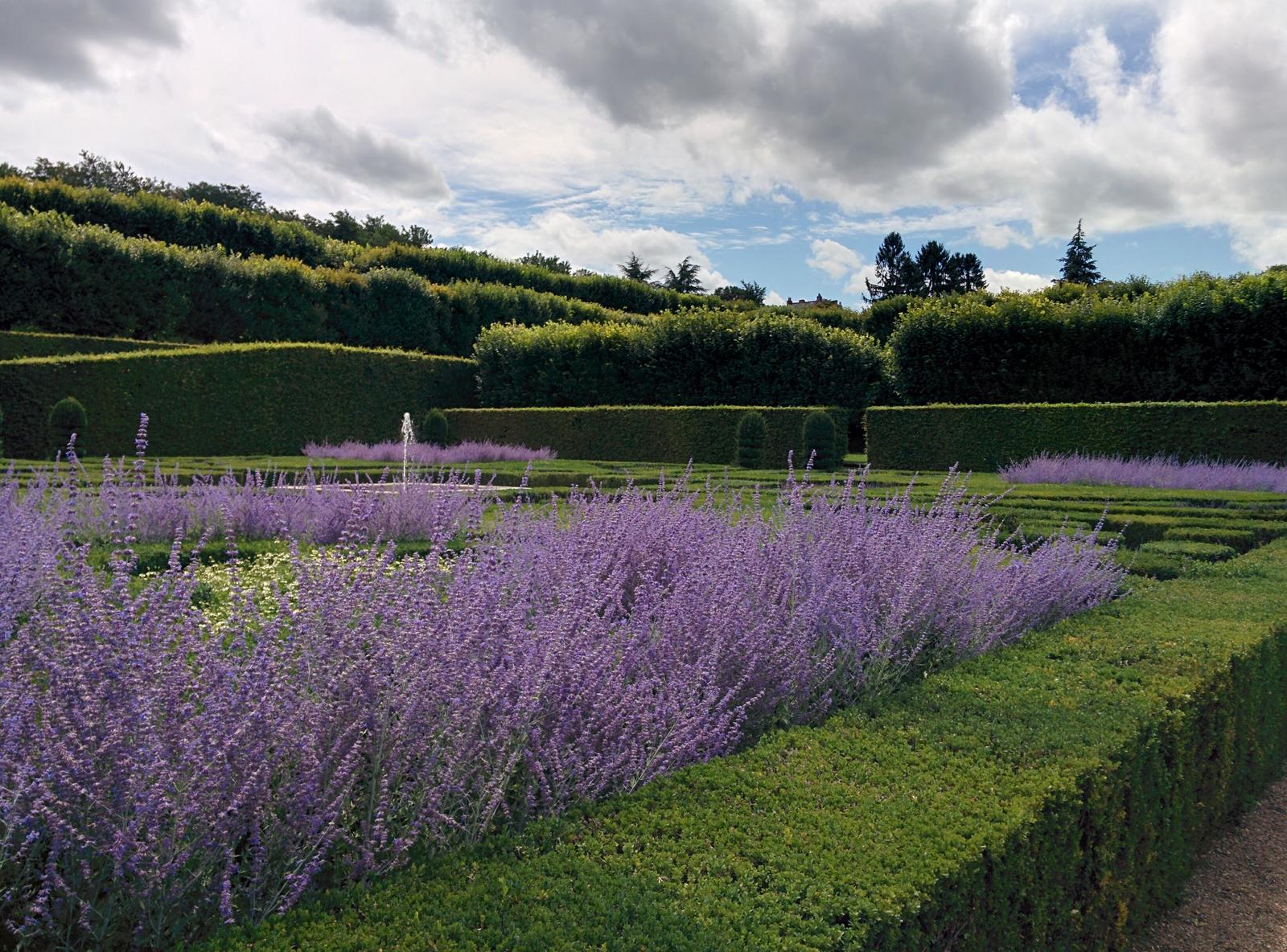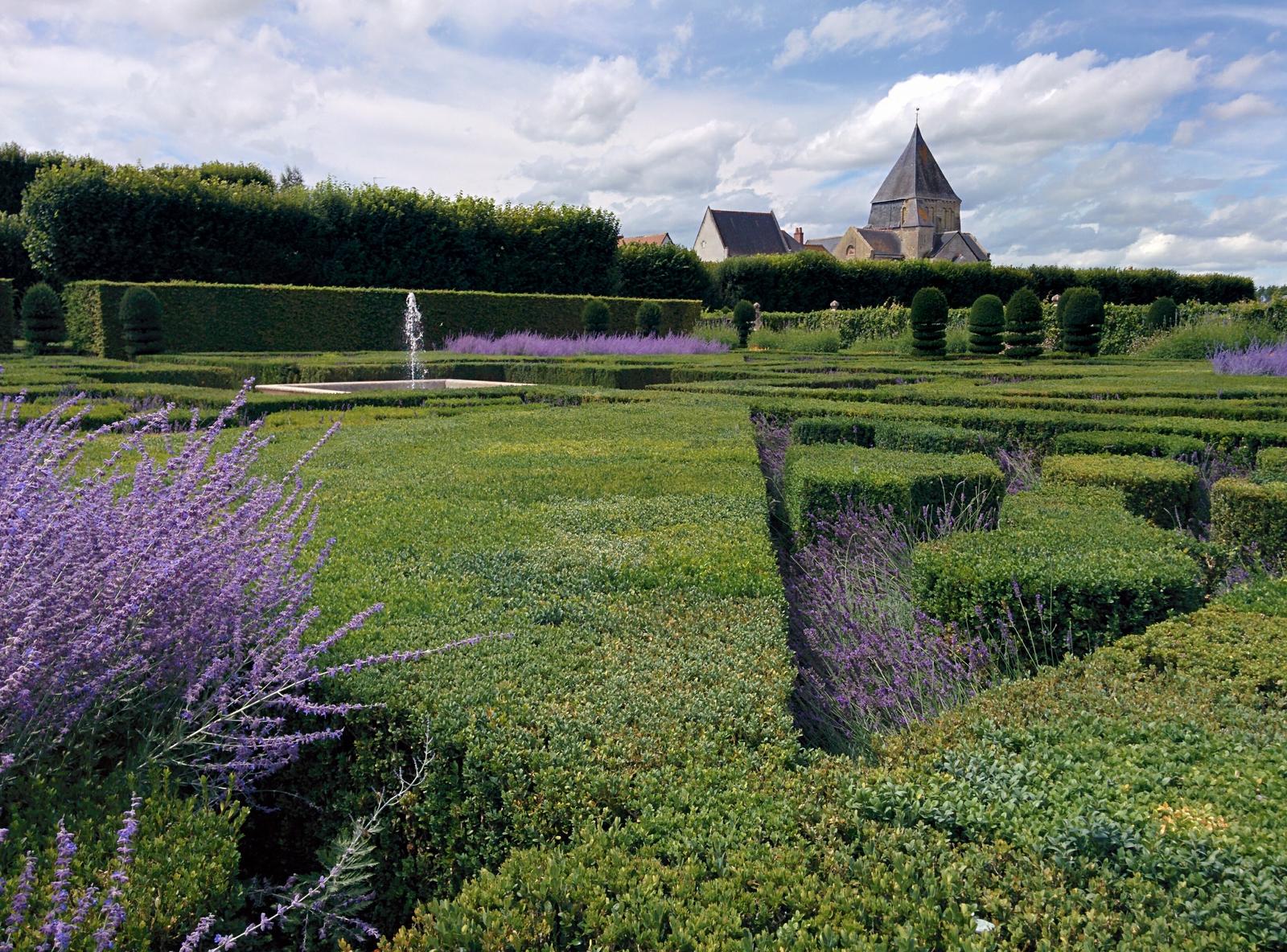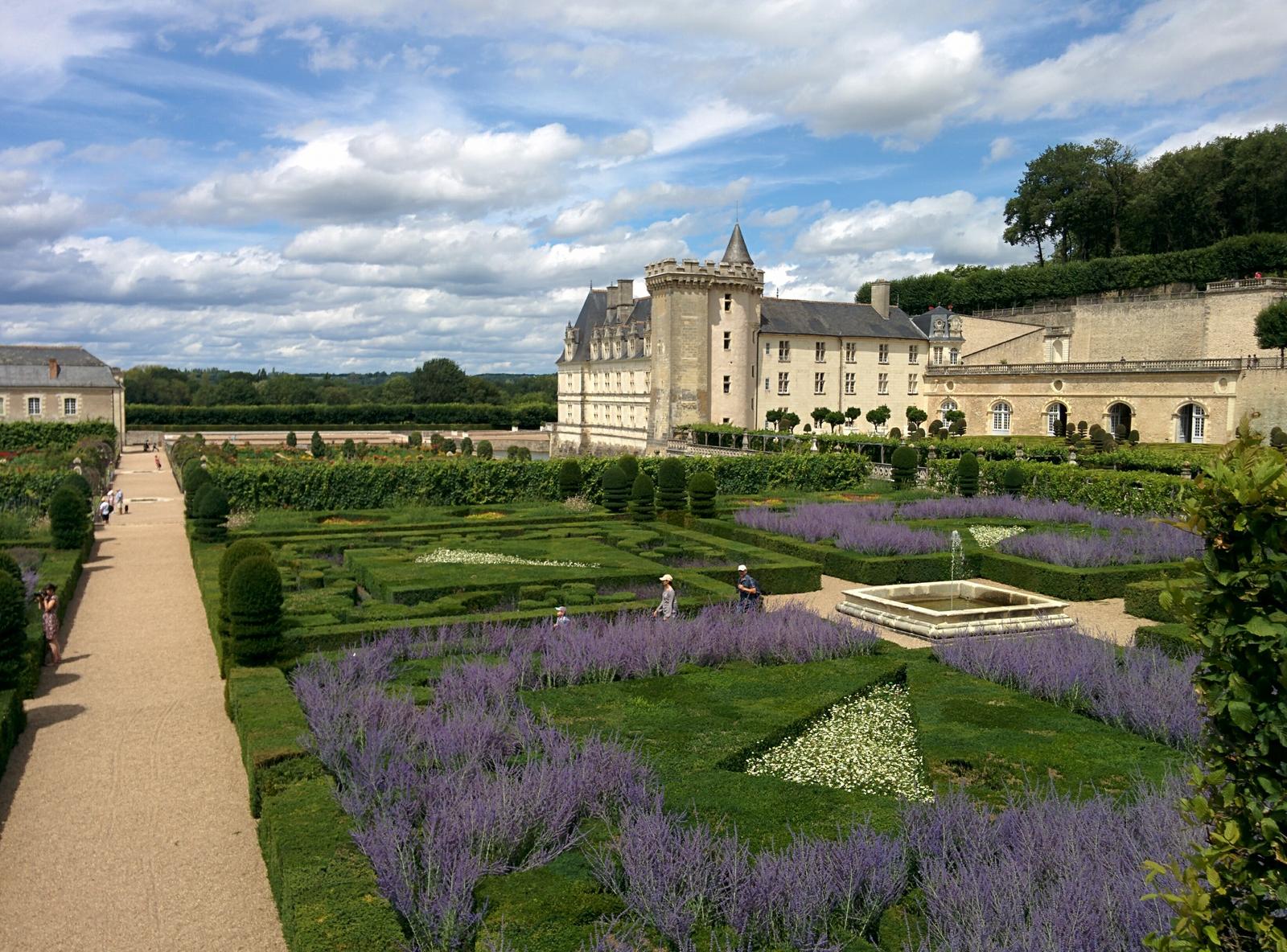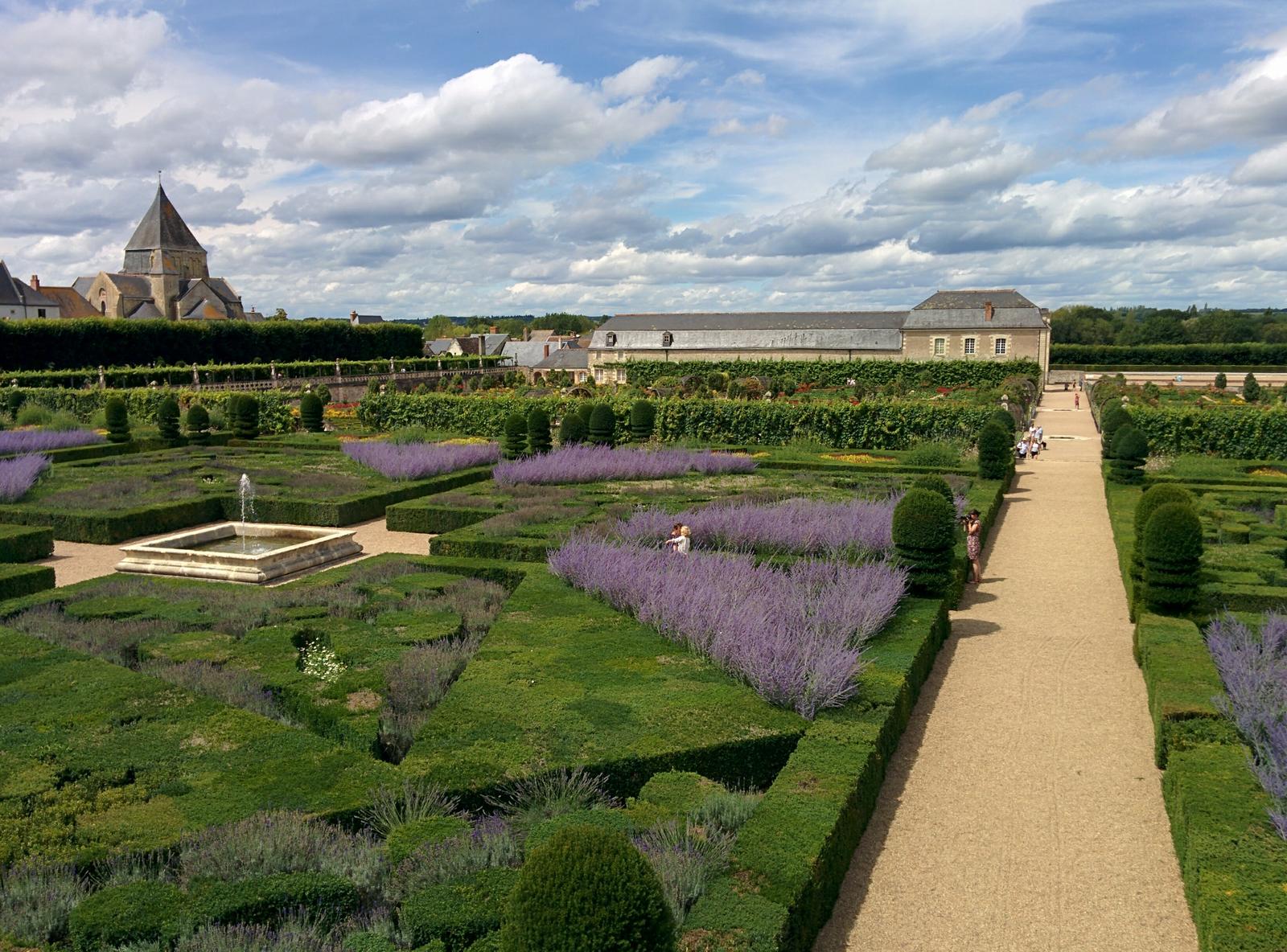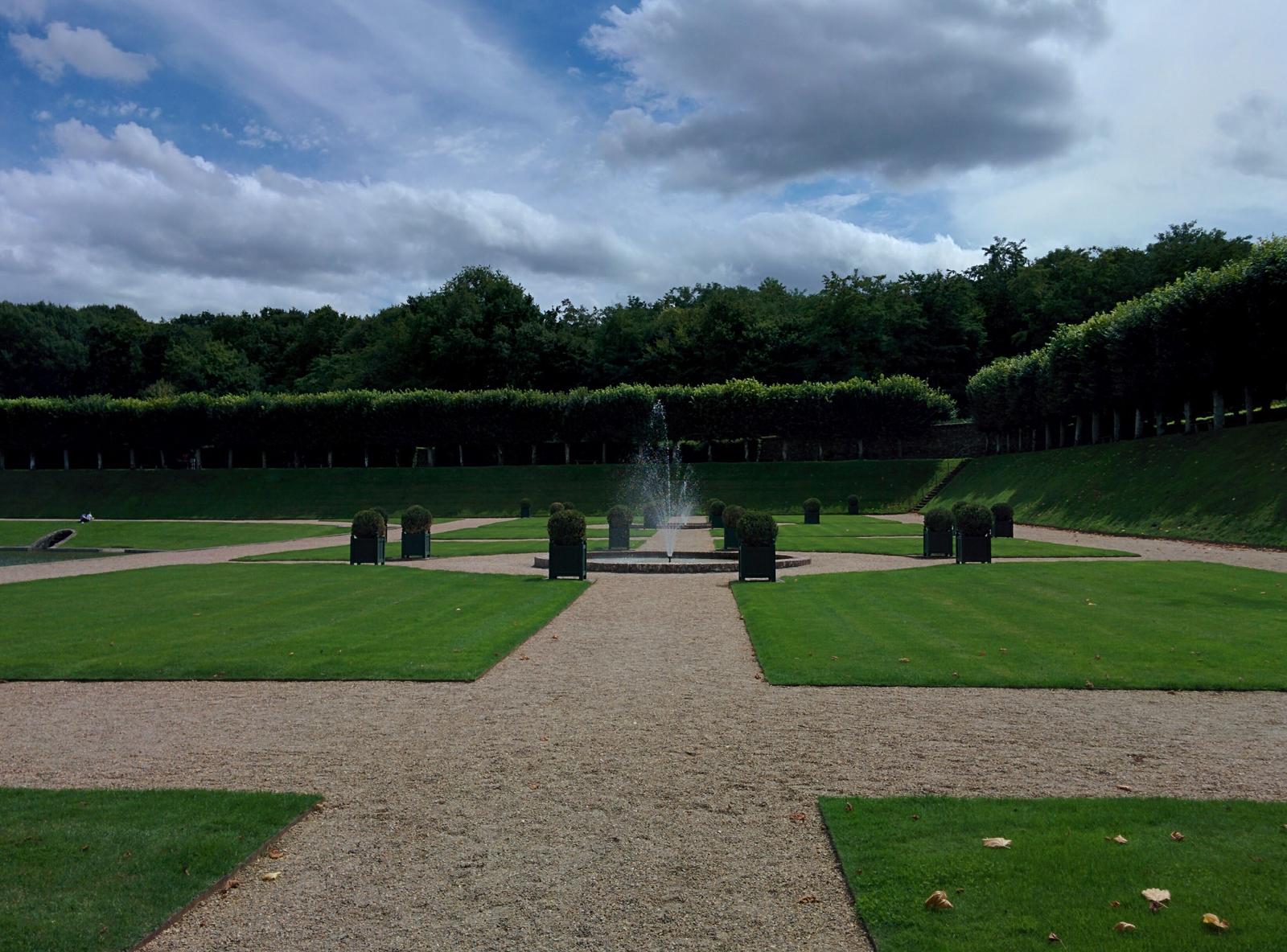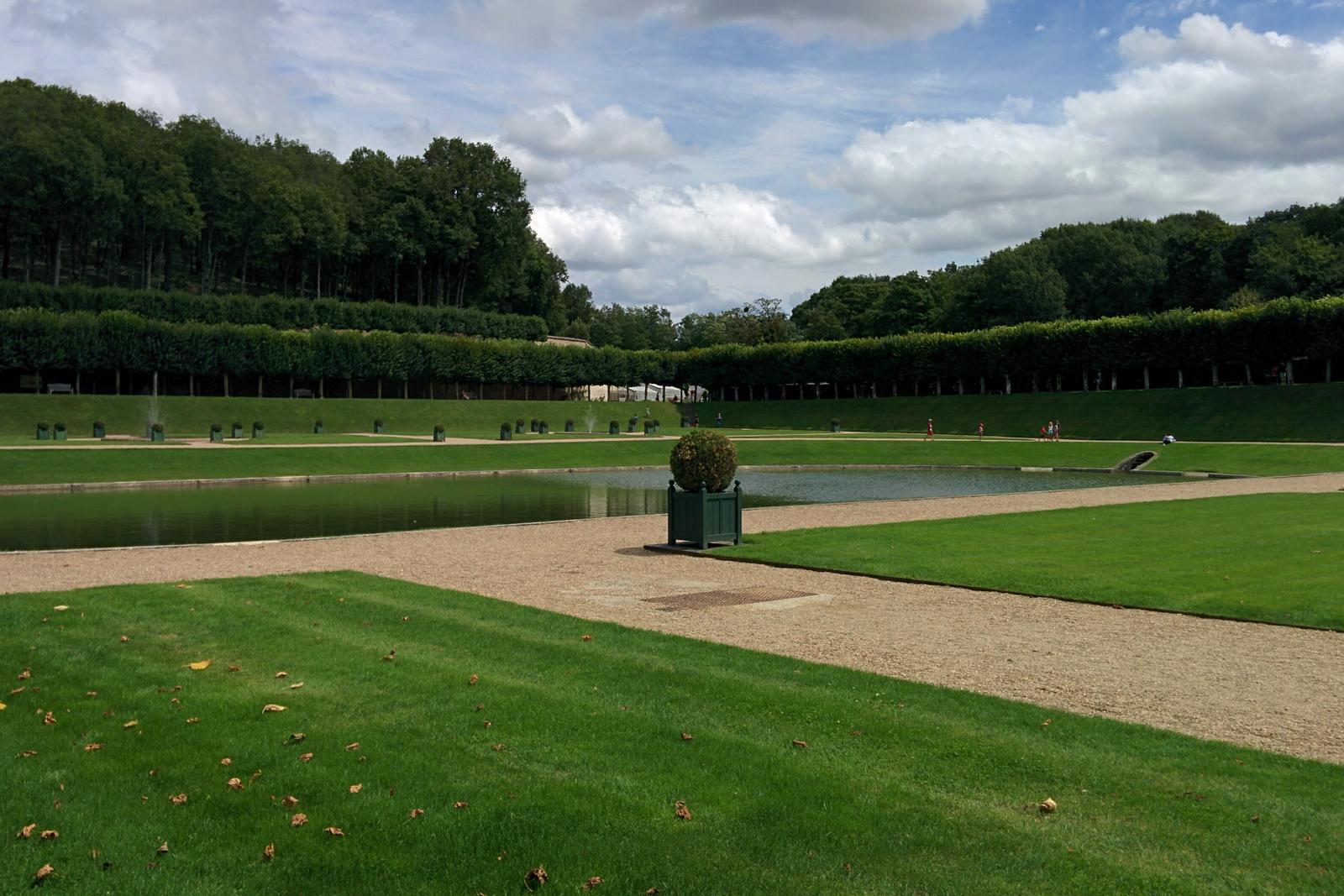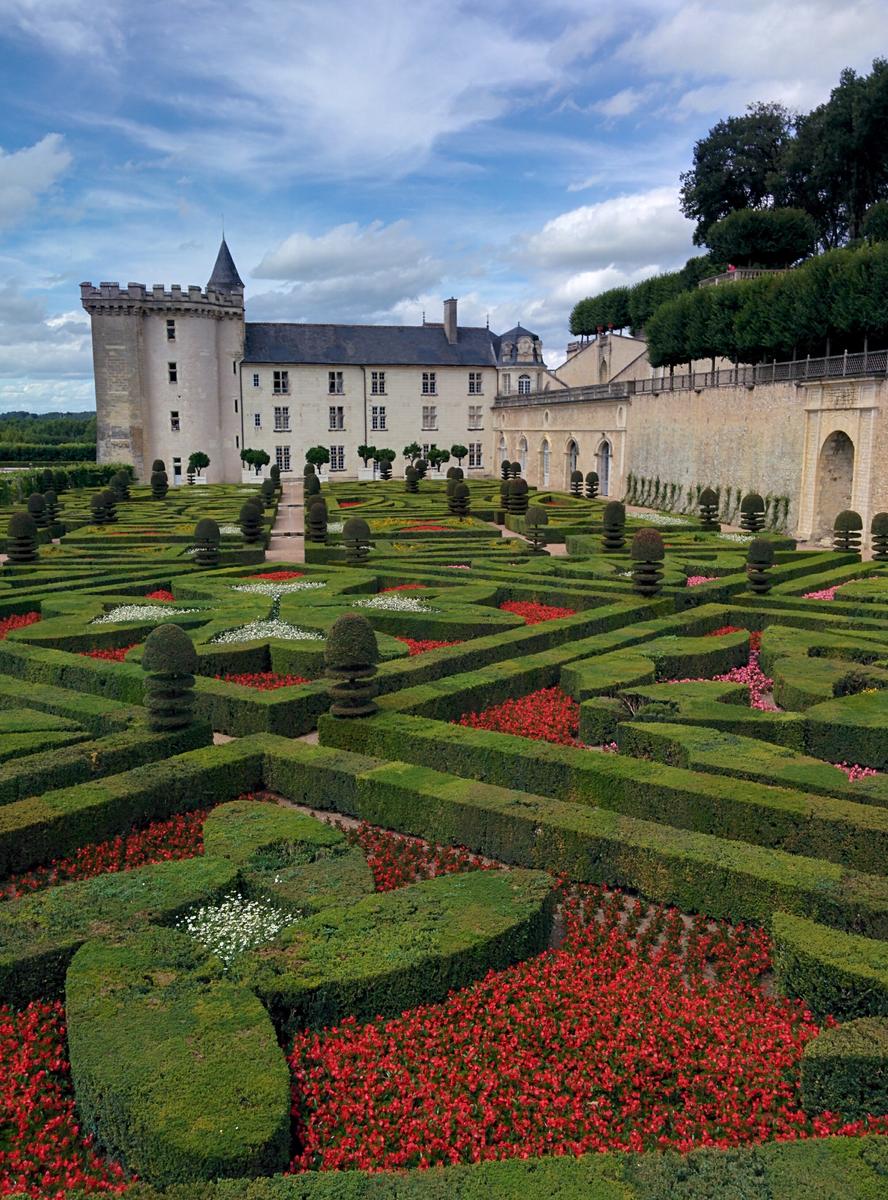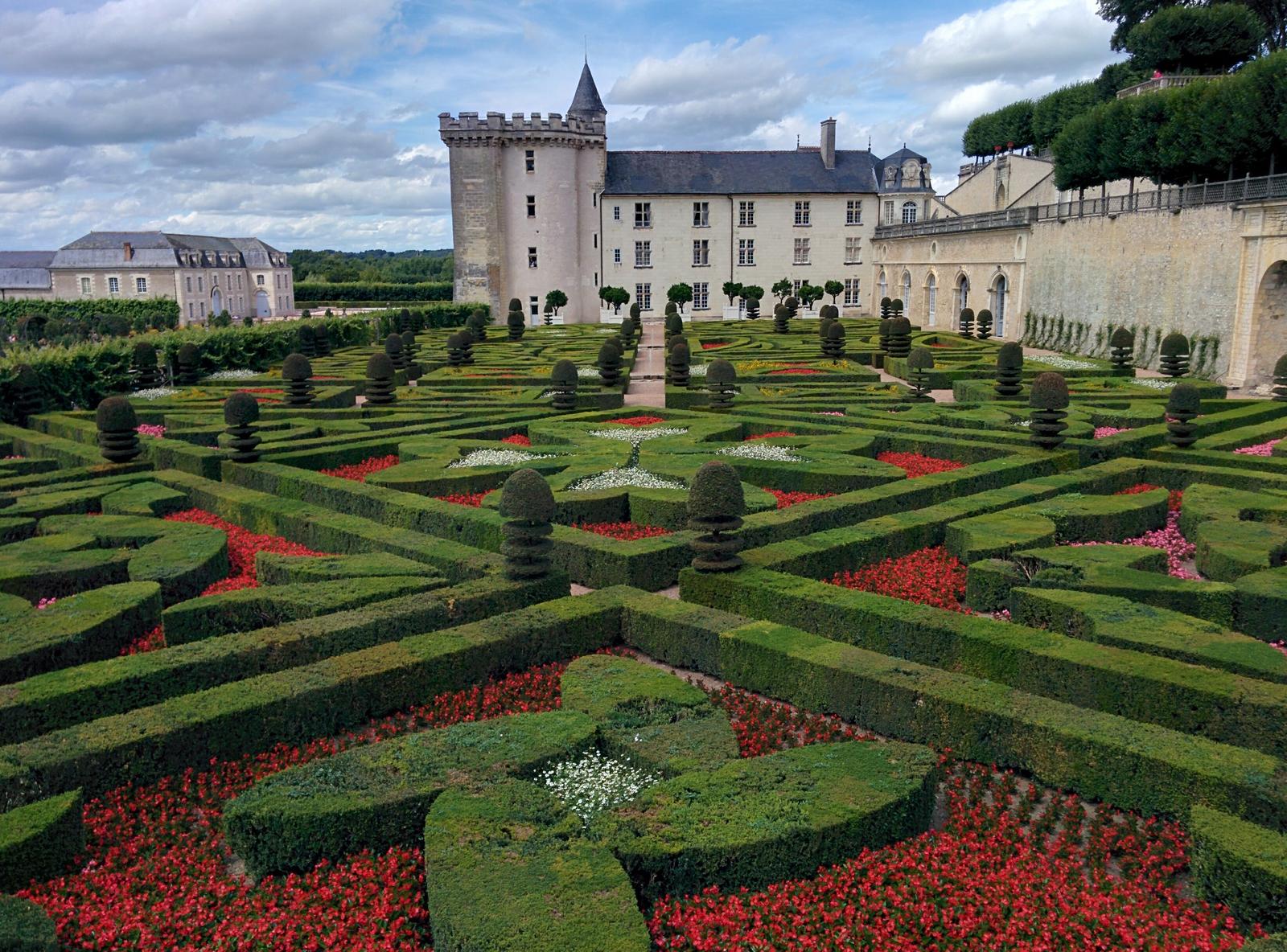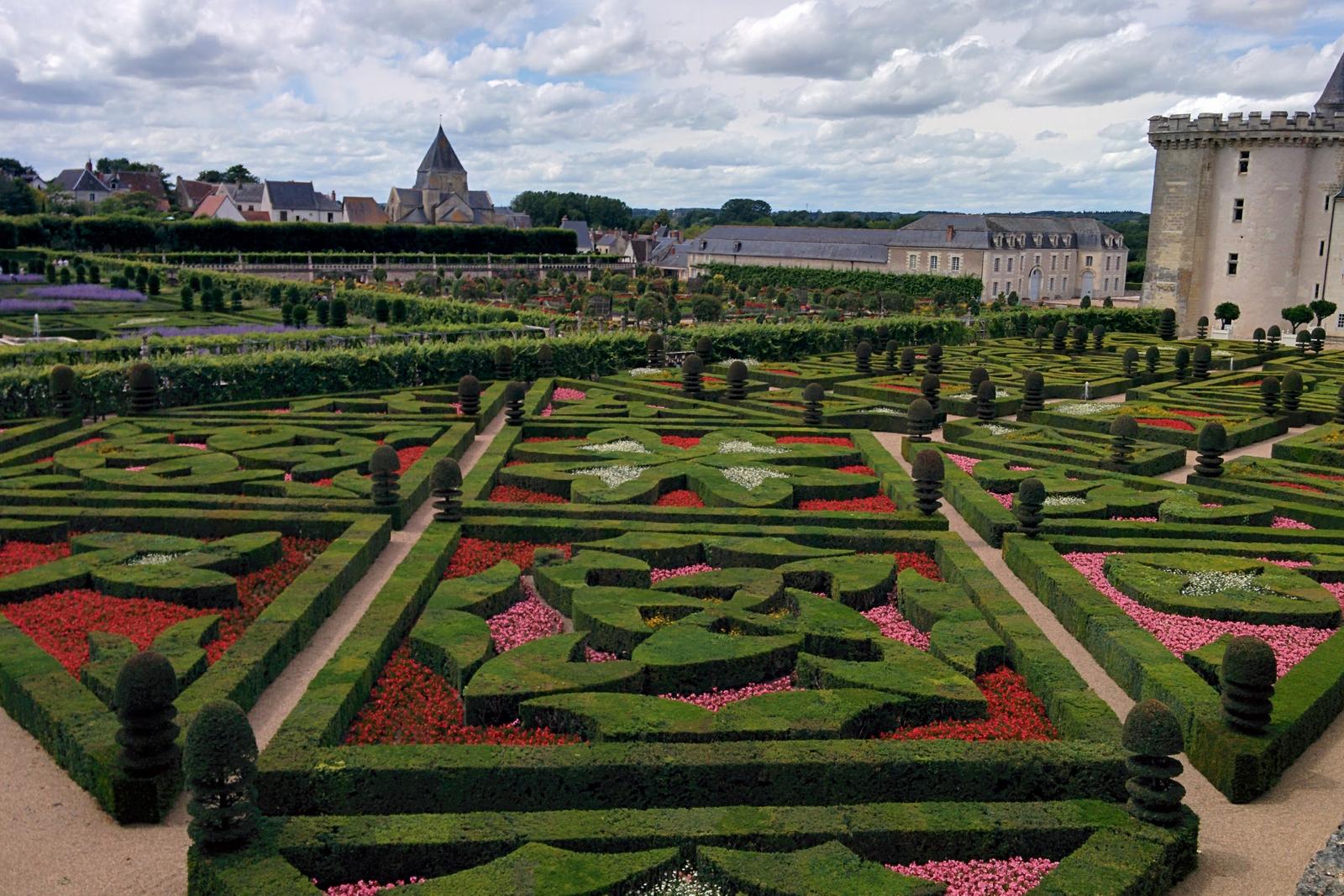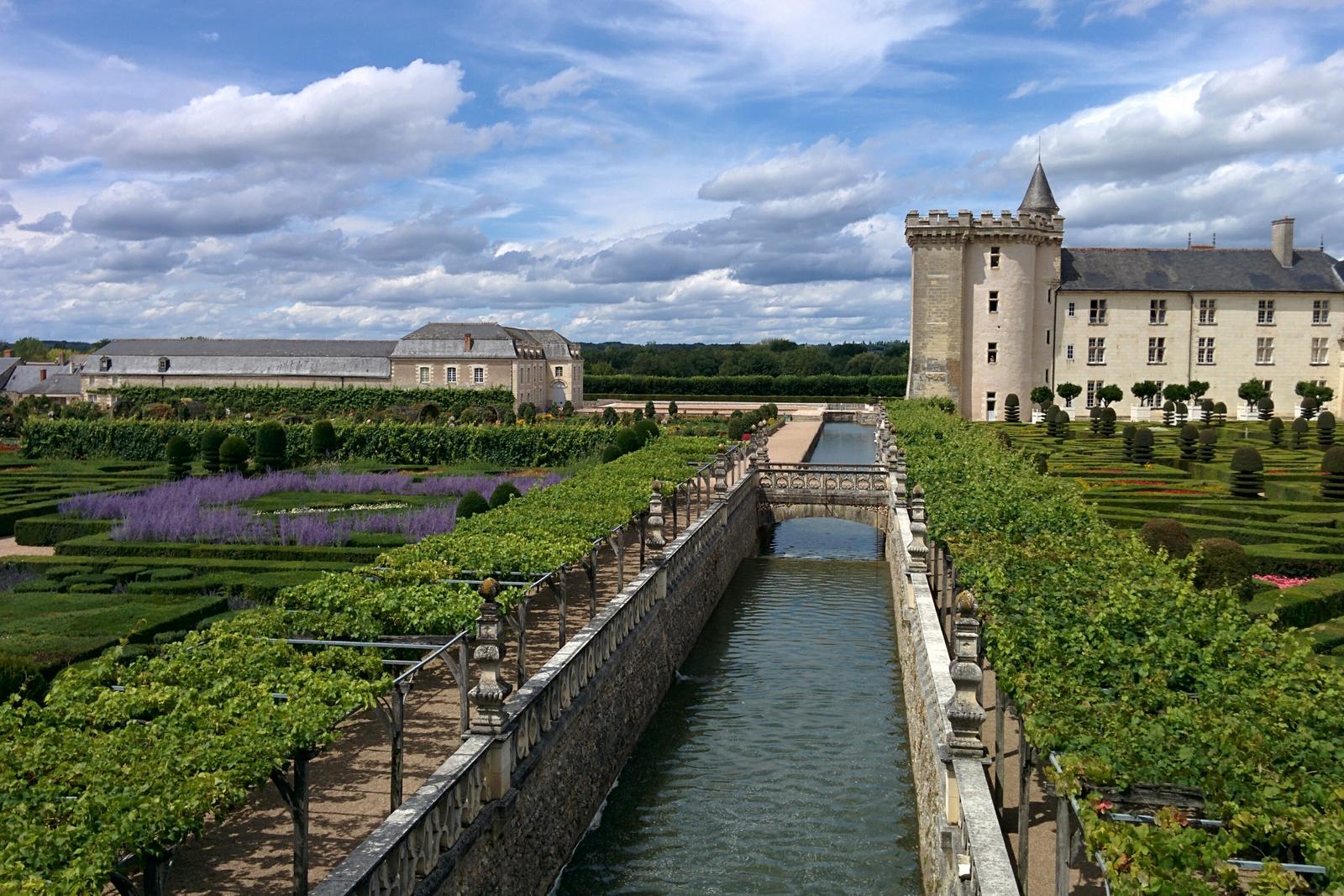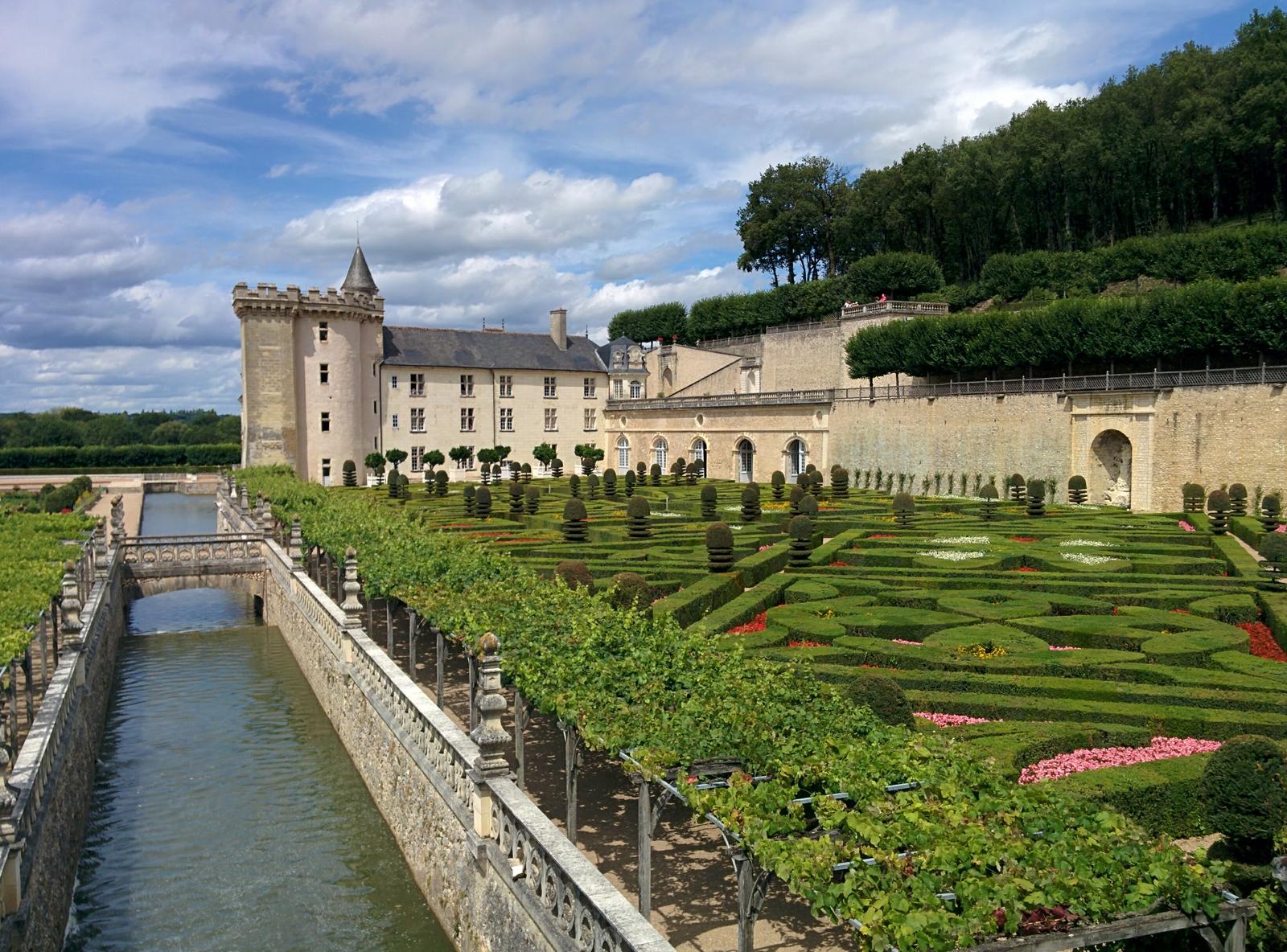Chateau de Chenonceau - Wonder of the Loire Valley or Ladies' Château
The Chateau de Chenonceau spans the River Cher.
Designed and owned by women only, Chenonceau is therefore also known as the Château des Dames - Ladies' Château.
Its architecture is a perfect combination of elegance, beauty and refinement that turn it into a superb illustration of French Renaissance.
French call it La Merveille du Val-de-Loire – the Wonder of the Loire Valley.
 Tour Marques and castle
Tour Marques and castle
 Grande GalerieThe Ladies of Chenonceau
Grande GalerieThe Ladies of Chenonceau
Catherine Briçonnet
In the early 16th century, the Chateau de Chenonceau was not more than a fortified manor-house and its watermill.
Thomas Bohier bought the two buildings, which had fallen into an advanced state of disrepair, from the Lord of Marques.
Thomas Bohier's wife, Catherine Briçonnet, commissioned the construction of the pavilion with four corner towers on the foundations of the mill.
The ruined buildings were pulled down except for the well and the tower.
The Marques Tower was restored during the Renaissance.
The well is still adorned with the coat of arms of the Marques family, a chimera and an eagle.
The courtyard, enclosed by a moat, is located on the site of the old fortress.
Catherine added a feminine touch to the plans by focusing on comfort and luxury.
The monumental entrance is a masterpiece of the Renaissance.
It is also adorned with the coat of arms of Thomas and Catherine Bohier and is crowned by a salamander, the emblem of François I.
Catherine commissioned also the construction of the first straight staircase ever built in France.
However, in 1535 their penniless son sold Chenonceau to King François I who turned it into a hunting lodge.
Diane de PoitiersFrançois I's son, Henri II gave the Chateau de Chenonceau to his young mistress Diane of Poitiers.A woman of talent and intelligence, Diane brilliantly took care of Chenonceau.She indeed developed the vineyard and the farm and transformed them into a profitable business.A woman of taste and luxury, she embellished the château, added the formal gardens and built a bridge across the River Cher.The king was killed in a tournament in 1559. Gardens
Gardens
 Grande GalerieCatherine de MediciHis widow, Catherine of Medici, knew how much Diane was fond of the Chateau de Chenonceau.She therefore spitefully exiled her to the Château de Chaumont sur Loire!However, Diane chose to retire to the Château d'Anet, another present from the late king.Catherine of Medici re-landscaped the park and added new buildings.But above all, we owe her the famous Italian Renaissance style two-storey gallery that tops the bridge built by Diane.A woman of pleasure and luxury, the queen organized numerous soirees, balls, banquets and fireworks which gave an air of pomp to Chenonceau.
Grande GalerieCatherine de MediciHis widow, Catherine of Medici, knew how much Diane was fond of the Chateau de Chenonceau.She therefore spitefully exiled her to the Château de Chaumont sur Loire!However, Diane chose to retire to the Château d'Anet, another present from the late king.Catherine of Medici re-landscaped the park and added new buildings.But above all, we owe her the famous Italian Renaissance style two-storey gallery that tops the bridge built by Diane.A woman of pleasure and luxury, the queen organized numerous soirees, balls, banquets and fireworks which gave an air of pomp to Chenonceau.
Louise de Lorraine
The castle became a place filled with grief when Marie gave the Chateau de Chenonceau to her stepdaughter.
Louise de Lorraine indeed retired to Chenonceau after the assassination of her husband Henri III.
She also became known as the Reine Blanche - White Queen because she wore white clothes and had the ceilings repainted in white in sign of mourning.
 Chambre des Cinq ReinesFrançoise de LorraineWhen she died, her niece Françoise de Lorraine inherited Chenonceau, which was later acquired by the Farmer General Dupin.
Chambre des Cinq ReinesFrançoise de LorraineWhen she died, her niece Françoise de Lorraine inherited Chenonceau, which was later acquired by the Farmer General Dupin.
Madame Dupin
His wife, Madame Dupin, took over the property; she founded a salon frequented by the most brilliant minds of the era.
Kept in high esteem by the villagers because of her charity work, Madame Dupin saved the Chateau de Chenonceau from demolition during the French Revolution.
Madame PelouzeMadame Pelouze fell in love with the chateau and purchased it in 1864.She spent a fortune restoring it to its former glory.She removed the caryatids statues that framed the facade's windows and placed them in the park. Tour Marques
Tour Marques
 Renaissance entrance door
Renaissance entrance door
 Tour MarquesChateau de ChenonceauThe elegant proportions and the gallery that spans the Cher are the castle's most photographed features!Each year, they indeed attract thousands visitors from all around the world.The interior decorations and furnishing boast the same elegance, refinement and luxury that the outside.The Guard-room is decorated with a 16th century fireplace and magnificent Flemish tapestries.The chapel's original stained glass windows were destroyed during WWII but were replaced in 1954.Diane's Bedchamber is a gateway into the world of the favourite of Henri II.Elegantly decorated with 16th century Flemish tapestries, the room is dedicated to the archives of the château.Copies of the signatures of Diane and Bohier are also displayed in a glass cabinet.The Library and the Bureau Vert exhibit more paintings and tapestries.Francois I's Bedchamber is richly decorated.It exhibits an impressive collection of paintings, furniture from the 15th and 16th centuries and a striking Renaissance fireplace with a mantle engraved with the motto of Thomas Bohier.The impressive straight staircase climbs to the Five Queens' Bedroom (Catherine of Medici's two daughters and three daughters-in-law).This room is decorated with Flemish tapestries and paintings by Rubens and Mignard.Finally, the staircase serves also the bedrooms of Catherine of Medici, César de Vendôme, Gabrielle d'Estrées and Françoise de Lorraine.
Tour MarquesChateau de ChenonceauThe elegant proportions and the gallery that spans the Cher are the castle's most photographed features!Each year, they indeed attract thousands visitors from all around the world.The interior decorations and furnishing boast the same elegance, refinement and luxury that the outside.The Guard-room is decorated with a 16th century fireplace and magnificent Flemish tapestries.The chapel's original stained glass windows were destroyed during WWII but were replaced in 1954.Diane's Bedchamber is a gateway into the world of the favourite of Henri II.Elegantly decorated with 16th century Flemish tapestries, the room is dedicated to the archives of the château.Copies of the signatures of Diane and Bohier are also displayed in a glass cabinet.The Library and the Bureau Vert exhibit more paintings and tapestries.Francois I's Bedchamber is richly decorated.It exhibits an impressive collection of paintings, furniture from the 15th and 16th centuries and a striking Renaissance fireplace with a mantle engraved with the motto of Thomas Bohier.The impressive straight staircase climbs to the Five Queens' Bedroom (Catherine of Medici's two daughters and three daughters-in-law).This room is decorated with Flemish tapestries and paintings by Rubens and Mignard.Finally, the staircase serves also the bedrooms of Catherine of Medici, César de Vendôme, Gabrielle d'Estrées and Françoise de Lorraine.

Tour Marques and castle
Grande GalerieThe 60m long two-storey gallery that spans the Cher is known as Grande Galerie.It was converted in a hospital during WWI and was used as a symbolic boundary between Free France and Occupied France during WWII.A Wax Museum, open all year round, relates the story of the famous inhabitants of Chenonceau.The Chateau de Chenonceau is today the property of the Miller family.

